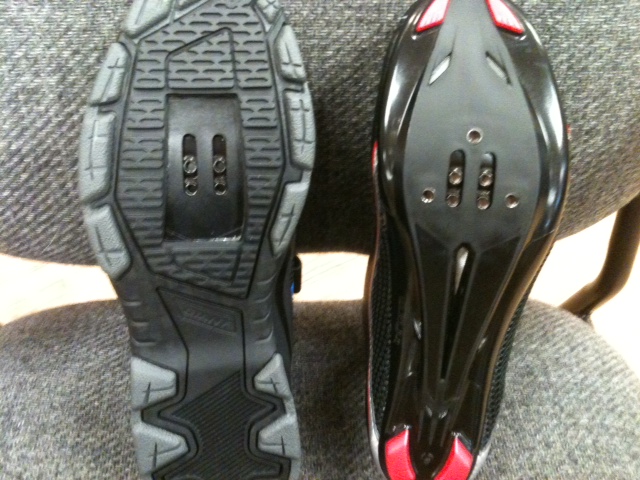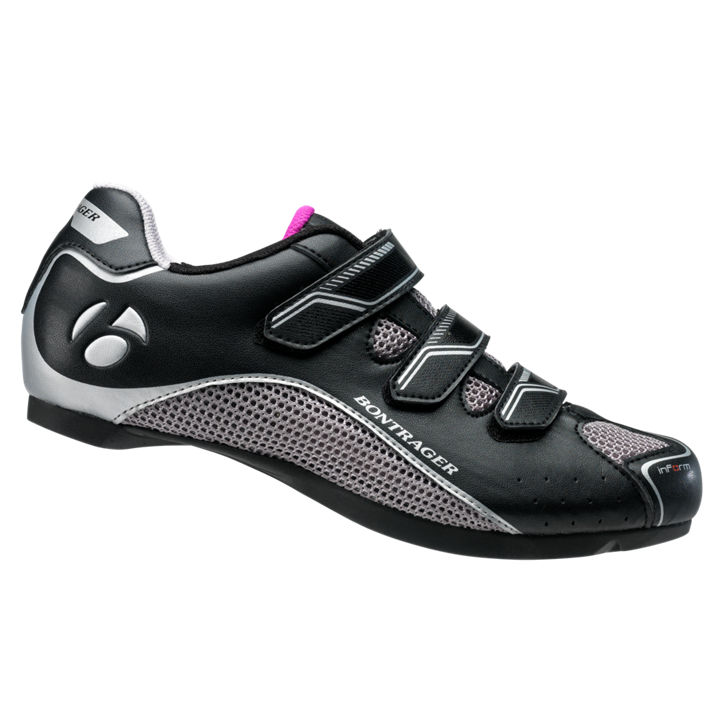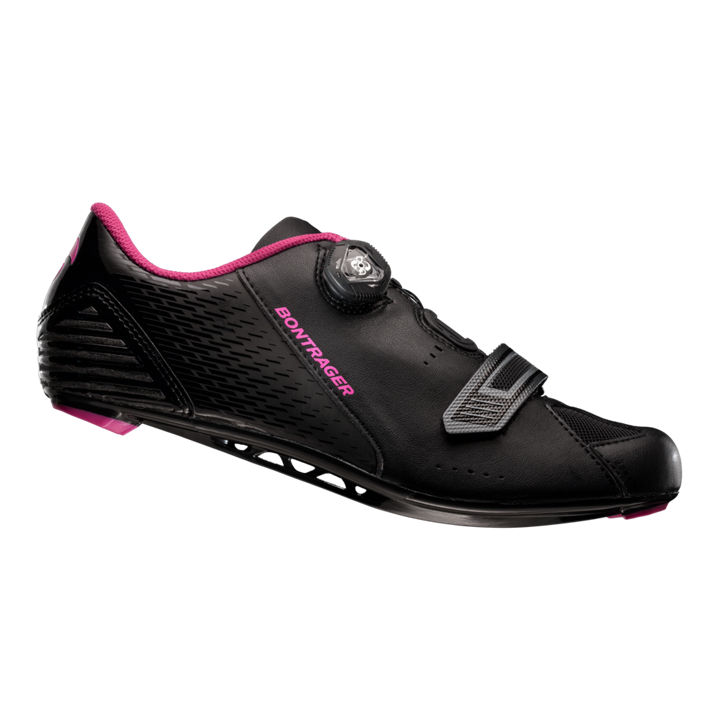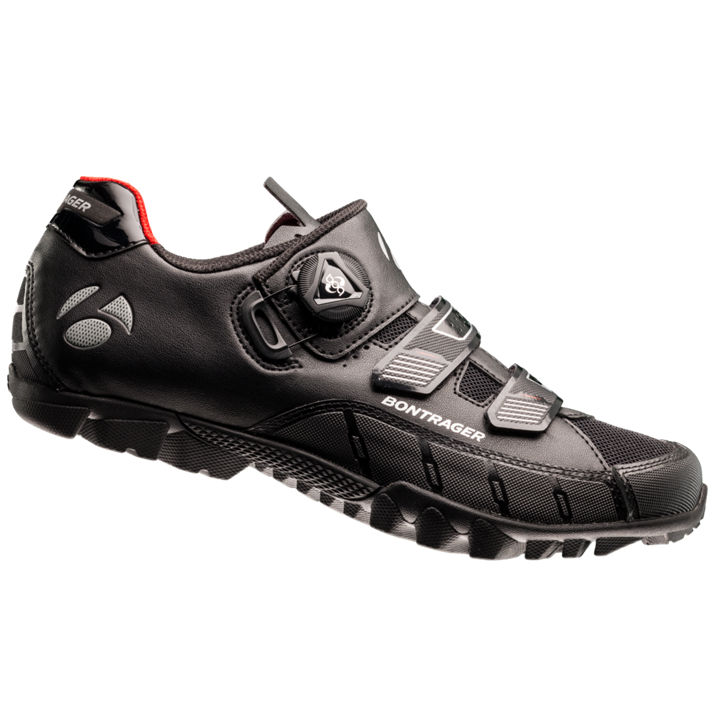Guide To Indoor Cycling Shoes
Taking an indoor cycling or Spin class or riding indoors at home? Wondering about cycling shoes? We have your answers here.
First, let's address the question "What is the difference between a Spin Class and an Indoor Cycling Class?" Simply, Spin is a trademarked type of indoor cycling class, so we'll refer to all classes taken indoors, including Spin, as indoor cycling classes. The same information applies to all classes.
Why use a cycling shoe indoors?
There are many benefits to using a cycling shoe instead of a sneaker. They include:
- Full leg workout. You work both legs during the full pedal stroke. Without clipping into the pedal, you only use your front leg muscles (primarily quads) during the forward pedal stroke. When clipped in, you use your rear muscle groups (hamstrings and glutes) on the up-stroke. You are getting more of a full leg workout. Also, working the oppositional muscle groups such as hamstrings and quads increases your joint stability and range of motion.
- Increased calorie burn (by working more muscle groups).
- More stability on the bike. You will feel more stable on the bike both when seated and standing.
- Increased foot comfort. If you are experiencing foot discomfort, this is often a result of the flex in the sole of the sneaker.
- More power. The stiff sole of a cycling shoe provides better power transfer to the pedal than does a sneaker.
Types of Shoes
People often ask for "spin shoes." Again, "spin" is trademarked - like Kleenex, for example. There is no specific definition of an indoor cycling shoe, but here's a good overview. Many different types of cycling shoes can be used on an indoor cycling bike, whether technically a road, mountain, or multi-sport/cross shoe. We'll go over the differences next. Usually, when somebody refers to an "indoor cycling" shoe, they mean a shoe that is designed to walk comfortably on the studio / gym floor and fits into the indoor-cycling bike pedal, so we'll use that term here. Based on your riding needs and preferences, and your personal fashion style (yes, that can matter too!), you have many choices.
All shoes for indoor cycling have 2 things in common: a stiff sole and an SPD cleat pattern. There are 2 types of cleat patterns - 3 hole (found on the higher-end road/tri shoes only), and 2 hole (SPD). Some indoor cycle bikes allow for a 3-hole pattern. Almost all indoor cycling bikes allow for a 2-hole system. The cleats are installed onto the shoe and then fit into the pedal on the bike.
|
Indoor Cycling and Mountain Bike shoes have recesses in the sole (left-hand shoe in picture). This recess allows the cleats to be flush with the sole so that you can walk comfortably. The recessed sole only has the 2-hole system - that will work in almost every indoor cycling class and certainly in all of the studios in this area. Many road shoes can accommodate both 2 and 3 hole systems (right-hand shoe) . Note that the center section looks similar to that in the left-hand shoe. You need those for most indoor cycling bikes. The 3 holes around the center that form a triangle pattern are for road-bike pedals only. This shoe will work on any pedal system, including the indoor cycles. Some road shoes, especially the more expensive ones, only have the 3-hole pattern. Check with your instructor or studio staff if you own one of those shoes to see if they offer appropriate pedals for them. The cleats will protrude and are awkward to walk in, but you can simply carry the shoes into class. |
 |
 |
Indoor Cycling Shoe (may also be used outside). This shoe has a recessed cleat for easy walkability. The sole is generally smooth, and the shoe is fairly light. A good indoor cycling shoe has good ventilation in the upper, because you work hard and sweat in your class! They usually have velcro straps or occasionally laces. This shoe is ideal for the person who wants a light shoe that is comfortable to walk in at class. |
 |
There are many styles of road shoes. They have velcro straps and/or buckle systems. Road shoes have protruding cleats and are awkward to walk in. They are the lightest and stiffest shoes, and provide the most power transfer. They tend to be more sleak and fit more snugly (but not tight). Because of the sleaker profile, some people prefer the styling. This shoe is ideal for somebody who wants to put out the most force on the bike (though indoor cycling and mountain shoes are very close), who rides outside with SPD pedals on their road bike, and/or who simply likes the fashion. |
 |
Mountain shoes also have recessed cleats and can be walked in. Rather than a smooth sole, they have heavier tread, similar to a hiking shoe, so that a mountain biker can walk on the trail if necessary. The lower and moderately priced ones tend to be heavier than indoor cycling shoes, in large part because of the heavier tread. The higher-end versions are quite light and stiff, but less comfortable to walk in. They come in various combination of laces, straps, and buckles. Some have uppers that look very much like a sneaker. This shoe is ideal for somebody who either likes the style (perhaps the sneaker look) or who also rides a mountain bike outside. |
Proper Fit and Cleat Position: Why Purchase from a Bike Store?
Like any athletic shoe, fit is very important. To complicate matters, cycling shoes are offered in European sizing. They often list a supposedly equivalent U.S. size. Unfortunately, the translations are not universal and not always accurate. Bicycles East staff take 3 measurements of your foot to ensure the proper fit - full foot size, arch length, and width.
Cleat position is very important. We install your cleat into the proper position based on your metatarsal location and your gait (for example, whether you point your toes forward, in, or out when you walk). Cleat position impacts both your foot comfort on the bike (avoiding numbness and hot spots) and joint health.
If you have additional needs, such as arch issues, plantar fasciitis, etc., we offer services to address those needs.
All of our cycling shoes have at least a 30-day unconditional comfort guarantee.
